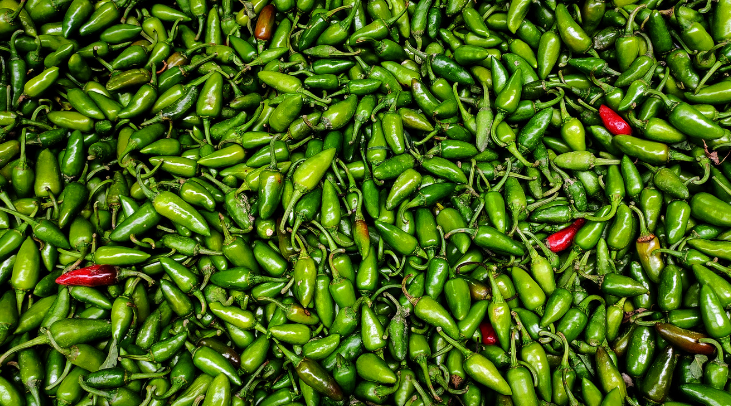Technological Innovations in Fresh Produce Exports
The fresh produce export industry, particularly for Indian green chilies, is experiencing dramatic changes due to advanced agricultural technologies. Drones and hydroponics are two key innovations enhancing the efficiency, quality, and sustainability of chili farming, leading to more consistent availability of fresh produce in the global market. Indian green chilies have carved a niche in the global market, owing to their unmatched flavor, versatility, and vibrant color. They are prized for their distinctive pungency and aroma, which elevate the taste of culinary dishes worldwide.Indian green chilies are a global favorite due to their unique flavor, rich nutrition, and versatility in international cuisines. Their authentic pungency enhances dishes, while their high vitamin content appeals to health-conscious consumers.
1. The Impact of Drones on Farming
Drones have become revolutionary tools in modern agriculture. They enable farmers to swiftly and effectively monitor extensive fields. With high-resolution cameras and sensors, drones help farmers observe the growth of chilies and other crops, identify diseases or pests early, and evaluate their plants’ health. This early detection allows for proactive measures and better management of resources such as water, fertilizers, and pesticides. As a result, drone use boosts yields and minimizes losses, leading to more dependable chili production and exports. Traditional farming methods in India ensure top-quality produce, and robust export standards guarantee reliability. This combination of taste, health benefits, and authenticity solidifies the dominance of Indian green chilies in the global market.
2. Hydroponics and Controlled Environment Farming
Hydroponics is another groundbreaking method that is reshaping how crops, including chilies, are cultivated. In this technique, plants are grown in nutrient-saturated water rather than soil, often in controlled settings. Hydroponics encourages faster growth and improved yield management, making it suitable for areas with poor soil or erratic weather patterns. Consequently, chili farmers can produce high-quality chilies year-round, regardless of weather conditions, ensuring a reliable supply for export. The consistent export standards and reliable supply chains make Indian green chilies a top choice for international buyers. These factors collectively underscore their dominance in the global market.
This method also has significant environmental advantages, using up to 90% less water than traditional farming, thus providing a sustainable solution especially in regions facing water shortages. Furthermore, hydroponic systems can be installed in urban settings, shortening the distance from production to consumption and reducing the carbon emissions associated with transporting fresh goods.
The Evolving Landscape of Fresh Produce Export
As the demand for fresh, high-quality produce continues to surge globally, Indian farmers are increasingly leveraging advanced technologies to meet this need. The implementation of drones for precise farming and hydroponic systems for continuous cultivation is paving the way for the future of fresh produce exports, particularly green chilies.Indian chilies are highly versatile, catering to various cuisines, from spicy Asian dishes to tangy Mexican salsas. The authenticity and traditional farming practices in India ensure a high-quality yield with minimal pesticide usage.
These advancements are enhancing the quality and reliability of the produce while enabling Indian farmers to thrive in the global marketplace. By adopting these technological solutions, Indian chilies can access a wider range of international markets, allowing consumers everywhere to savor the distinctive flavors of Indian green chilies throughout the year.
The combination of India’s rich agricultural tradition and the adoption of innovative technologies like drones and hydroponics is setting the trajectory for the future of fresh produce exports. With a growing global craving for green chilies, these technologies ensure that India remains a pivotal player in the international spice industry.Their rich nutritional profile, packed with vitamins A and C, makes them a sought-after ingredient in health-conscious markets through freshhly picked.
The global demand for authentic Indian green chilies is driven by their unique blend of flavor, nutritional benefits, and versatility. Combined with traditional farming practices and reliable export quality, they stand as a testament to India’s rich agricultural heritage. As international markets continue to seek premium-quality produce, Indian green chilies remain an unparalleled choice, reinforcing their position as a global favorite in culinary traditions worldwide.



